Are you a Pinterest pro?
There are untapped opportunities to expand your network and reach a new audience on Pinterest. Addicted fans have made this virtual bulletin board spring from a start-up to one of the most popular social media platforms on the web.
If you think Pinterest is just for wedding planners or mothers, you could be missing out on an untapped market of future clients.
Pinterest in known for its DIY ideas and craft projects, but includes everything from art to technology, to recipes, fashion, home décor, health, and fitness. While the majority of its users are female, its rapid growth indicates that it will always be open to new users.
If you want to get started on the road to Pinterest success or you simply want to refine your strategy, here are a few sweet tactics you can try out.
Before we get to those, did you know you can buy signals of Pinterest engagement, such as followers and likes? Just be sure to purchase from a high-quality, reputable provider, like the ones you’ll find reviewed on our site.
1. Create an Engaging Board
One of the keys to succeeding on Pinterest is to create boards that are centered and focused on lifestyle and not on the products. You have to determine the culture, principles, and values of your company, then create boards that best project your company’s ethos.
A good example of this would be Whole Foods, who has so many boards on different topics, from culinary, to recipes, to kitchen, to lifestyle. The Travel Channel is another great one, enticing their followers with their “Daily Escape Boards.”
Create boards that generate specific feelings, with a style that fits with your target audience. You want them to feel inspired, even if they’re looking at a sales pitch.
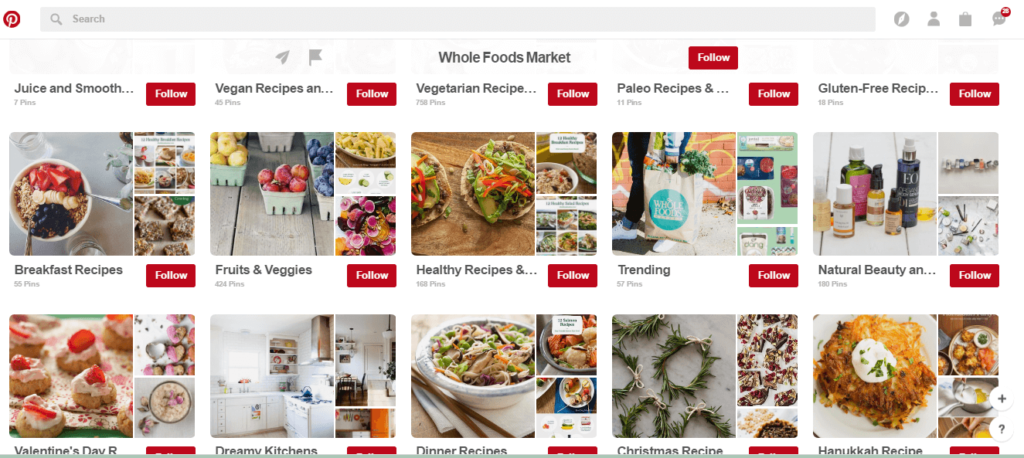
Image credit: Pinterest
To do this, you’ll of course need to do some work to determine the nature of your target audience. Try creating some buyer personas, and create content with them in mind.
Pinterest users are often there for the ideas and inspiration, rather than to shop for specific items. Stand out from your competitors by creating a distinct identity for your company’s Pinterest board.
Through this, you can start to create a community that followers will want to be part of. Eventually this will lead them to your board and your merchandise.
2. Create Engaging Captions
The success of an individual Pinterest Pin lies in the level of engagement it receives. If a Pin has some genuine appeal, it will get much better engagement rates.
The more your provide specific and thoughtful captions, the more Pinterest will take notice. Make sure you provide descriptions that will help Pinterest users find your posts when they search for relevant topics.
Describe your image or product in as much relevant detail as possible. You can put in helpful explanations, keywords, and calls to action for viewers.
To spice up your captions, consider signing up for Rich Pins. Rich Pins are special content features, that make it easier for viewers to buy your products.
Don’t forget the little things, such as using correct capitalization and punctuation. No hashtags, no straight-up promotional information.
With the way Pinterest is set up, your readers will only see the images on their pages, and not the context they come with. Only 75-100 characters of your caption will appear in the grid view of Instagram, so make sure to use your space wisely to increase the chances of your Pin being shared.
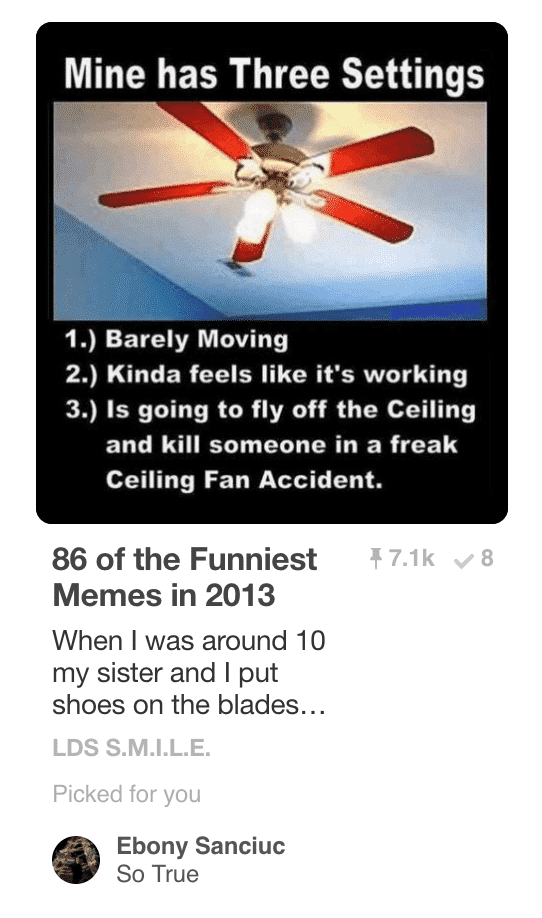
3. Pin More Often
One of the best ways to increase engagement is to Pin more often. You can Pin as often as 10 times a day.
To make everything easier, you should schedule your posts ahead of time and space them out appropriately. You can create more pins or find more content to share, and schedule it evenly so as not to bombard your followers.
This will help you be consistent, a key feature of Pinterest boards that will keep people coming back for more.
Spacing out your pins will prevent you from annoying and potentially losing your followers. Schedule your posts with tools like Buffer, TailWind, SocialPilot, or ViralWoot
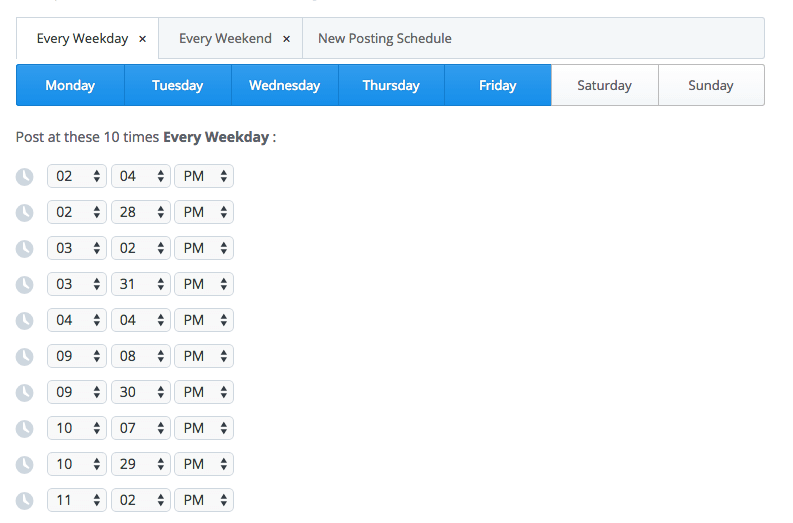
Image credit: Buffer
4. Your Images should be Sized Appropriately
Here’s another secret – on Pinterest, vertical pins do best. According to Buffer, the best aspect ratio for Pinterest images is 2:3 or 1:3.5. Aspect ratio is defined as the relation of the width to the height of an image.
A 2:3 aspect ratio could be
- 600 pixels wide by 900 pixels tall
- 800 pixels wide by 1,200 pixels tall
A 1:3.5 aspect ratio could be
- 600 pixels wide by 2,100 pixels tall
- 800 pixels wide by 2,800 pixels tall

Image credit: Buffer
5. Include Your Community
When building your brand, influencers and brand ambassadors can be extremely useful to help get your content in front of a ton of people. You start by looking for the influencers in your niche, following their work, and eventually reaching out to them.
Be sure that you can add some value when contacting them. Whether they become paid sponsors or just rabid fans, you’ll need to be able to add something meaningful to their lives.
Check out Joy Cho, who has a huge audience. She can direct her followers to check out any products she likes, definitely increasing the profits of anyone involved.
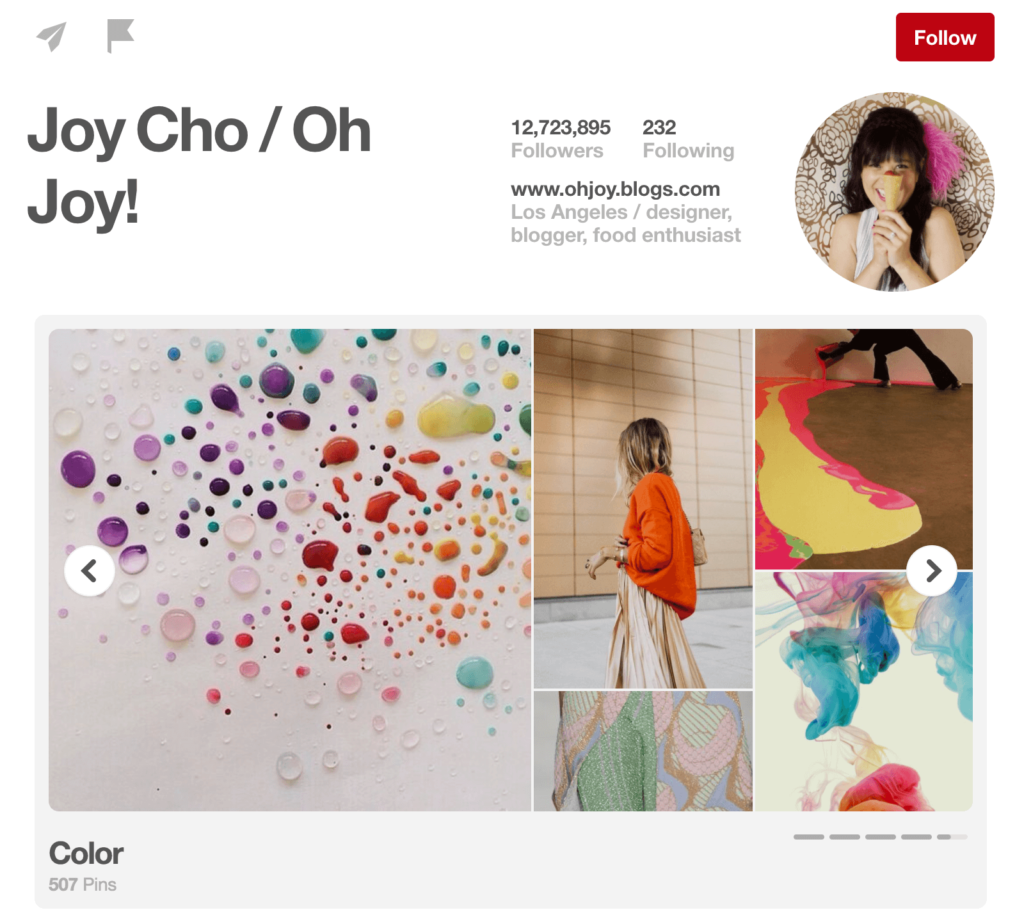
Create a pinning board that you can share with others, which will encourage them to post. This will help you build a community around your brand, and bring in an even larger target market.
Be sure to share your Pinterest content on your other social media accounts (this is where those scheduling tools can be especially helpful). Share the content between your networks, and you’ll automatically increase your reach.
Want to boost your followers and likes quickly, without waiting on organic growth? Check out our reviewed list of providers of Pinterest followers, likes, and other signals of engagement, and get your campaign off the ground.
6. Balance and Analyze your Content
Plan a winning strategy by posting specific amounts of content designed for specific purposes.
Here’s a tactic:
- 40 percent of your boards should be motivational and inspiring
- 40 percent should be instructional and educational
- The last 20 percent should be about your brand, including posts about product launches, announcements, contests et.
It’s also important to keep an eye on your analytics, to see what works with your target audience and create strategies based on what you learn. Take note of your most engaging posts, and try to replicate your successes while minimizing your failures.
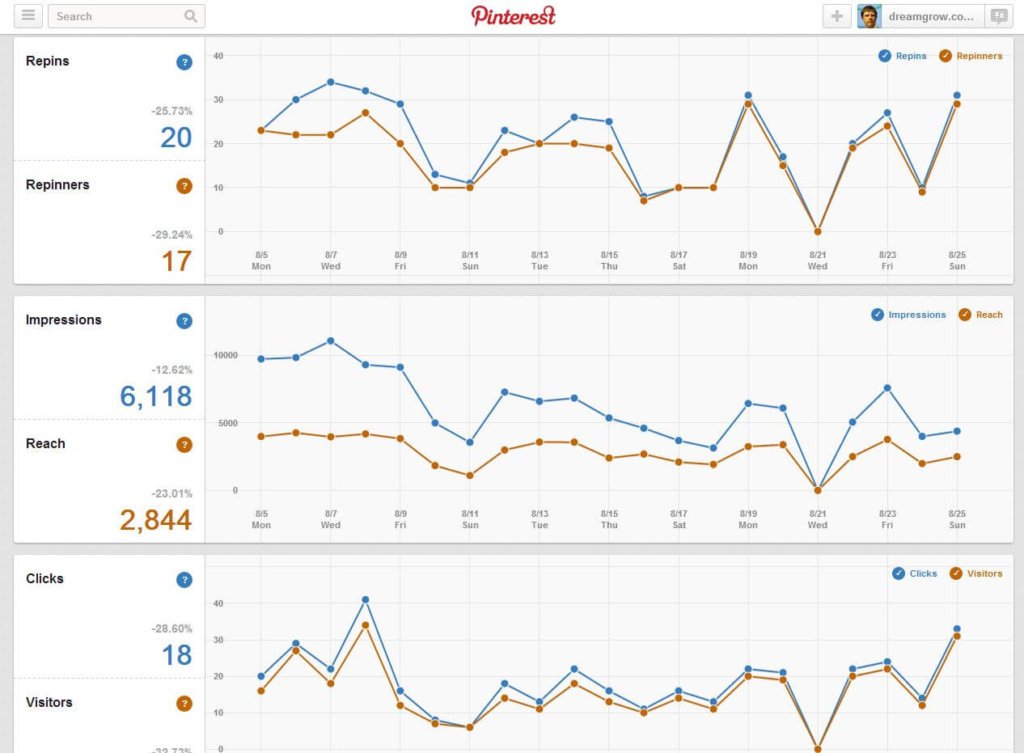
Image credit: DreamGrow
Pin It to Win It!
As you create your new boards, think about the goals you want to accomplish. There are four main types of goals to consider on Pinterest:
- Building awareness: You want to tell a story about your brand
- Increase engagement: Inspire your target market to click or save the pin
- Increasing clicks: Boost traffic to your website
- Drive conversions: Turn pinners into future clients
The more you make time to make your pins beautiful, the higher your chances of converting pinners into clients. If you’re looking for ways to appear more credible and draw people to your account more quickly, remember that you can buy followers and likes to get thing moving faster.

